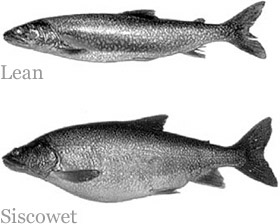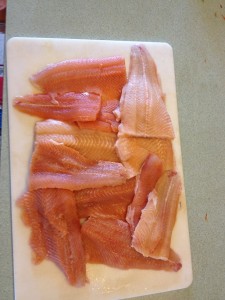Want to learn how to catch more lake trout?
See my free gift: Study of Lake Trout
 There is a perception out there (by some) that lake trout is not worth putting on our dinner table because it’s not good for us or doesn’t taste good. None of this is true about the lake trout that we are enjoying from the Lake Superior waters of Bete Grise, Stannard Rock, Copper Harbor and Eagle Harbor…or anywhere around the Keweenaw Peninsula. (I should include the whole Upper Peninsula, for that matter)
There is a perception out there (by some) that lake trout is not worth putting on our dinner table because it’s not good for us or doesn’t taste good. None of this is true about the lake trout that we are enjoying from the Lake Superior waters of Bete Grise, Stannard Rock, Copper Harbor and Eagle Harbor…or anywhere around the Keweenaw Peninsula. (I should include the whole Upper Peninsula, for that matter)
In order to shed light on this, I wrote about the different species of lake trout in Lake Superior a while ago here: “Dispelling the Myth about Lake Trout.” This article tells about the 2 of the 4 different forms of “lakers” (as we call them), one of which we rarely ever catch at Sand Point Charters.
This misunderstanding of our fish comes from at least 2 beliefs about them:
1. They have high levels of contaminants in them.
2. They are too fatty, so it gives them a strong fishy taste and/or too much fat is not good to consume.
On Contaminants:
The smaller, lean lake trout that we catch are completely safe to eat and are, in fact, good for us. The “bad stuff” is in the skin and belly fat of the older, larger trout (over 30 inches) that have been bottom feeding for a long time…not in the smaller, lean trout. If there is any concern at all about the smaller ones, just take the time to trim all fat (which is mostly in the belly area) and skin before cooking, and cook on an open grill where any fat can drip away.

These are all lake trout fillets… notice how lean and healthy looking!
There is a comprehensive study of Michigan fish in this report: Fish Advisory. This report shows there is “… no consumption restriction on (lean) lake trout under 30 inches for the general population.” For women and children, the report says only eat lake trout that are 26 inches or less and limit to one meal per week.
On Fat:
Yes, lake trout have more fat than walleye, crappie, white fish, salmon and others, but the lean lake trout that we catch have a 10% to 15% fat content. The other lake trout species, Siscowet – the deep “fats” – have over 50% fat content, but we rarely catch them, because we don’t fish that deep. Also, the fats in fish aren’t artery clogging saturated fats, but are the good, heart healthy omega-3 fats that are essential for growth.
On Fishy Taste:
You may have had some lake trout that you bought from a store or fish house, or even at a restaurant that was “fishy” tasting. Chances are, the fish wasn’t fresh anymore…it had to be caught (probably in a net) and dead several days, if not a whole week or more before it was cooked for you. Or it was a “farm raised” fish that was fed who knows what? The fact is, when you catch your own lake trout and get it on ice right away, then clean and cook it soon after, it doesn’t acquire the fishy taste. I think the fishy taste and smell comes from the aging process…call it rot if you like.
There is nothing better than FRESH lake trout that you caught yourself, and you KNOW is lean and was kept COLD once it was caught!
So get out there and “GO get ‘Em!”
If you’d like to learn more about fat lake trout (Siscowet) and lean lake trout (that we catch) see this article: Fats and Leans (lake trout.)

 Brian Helminen
Brian Helminen

